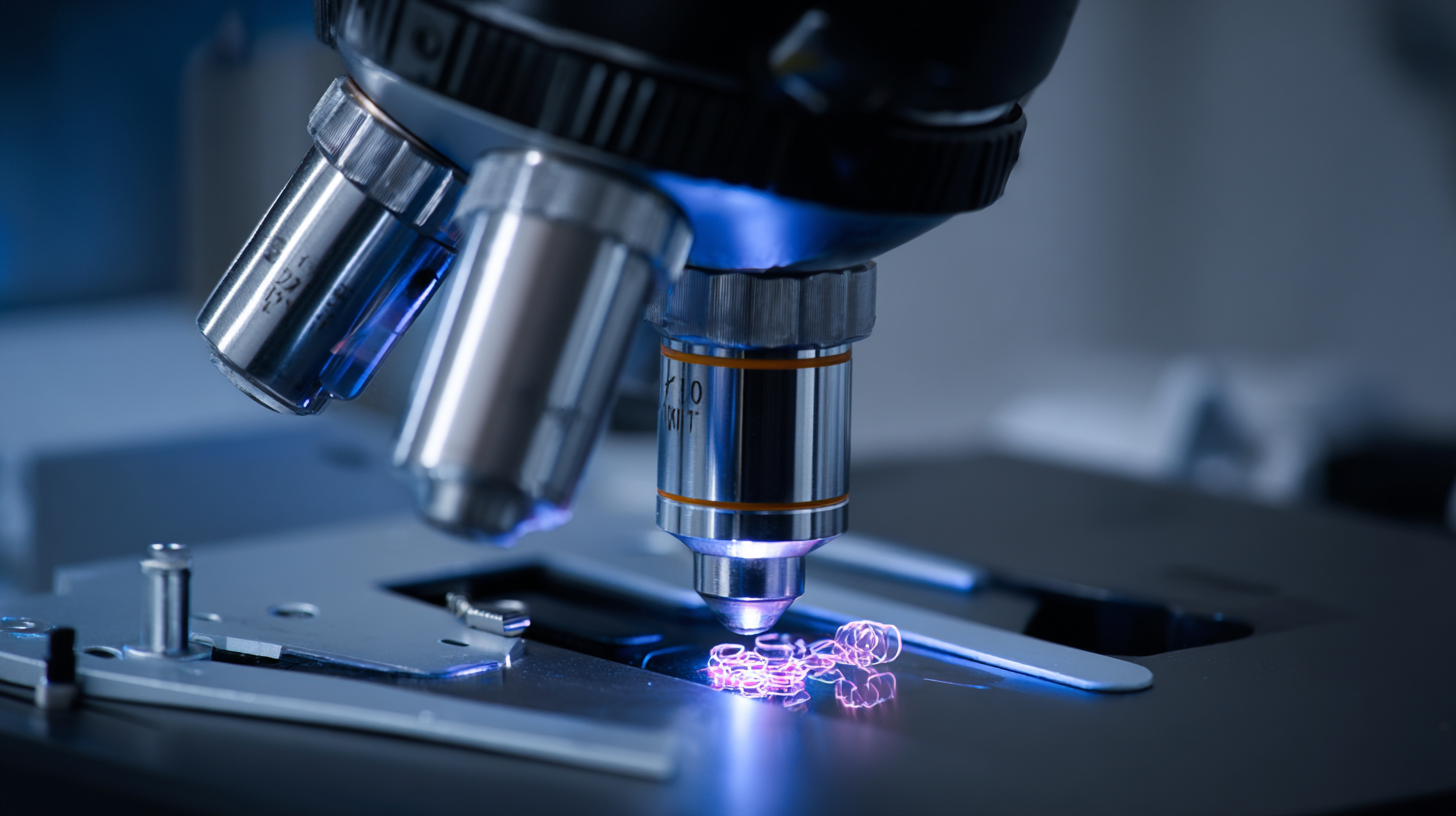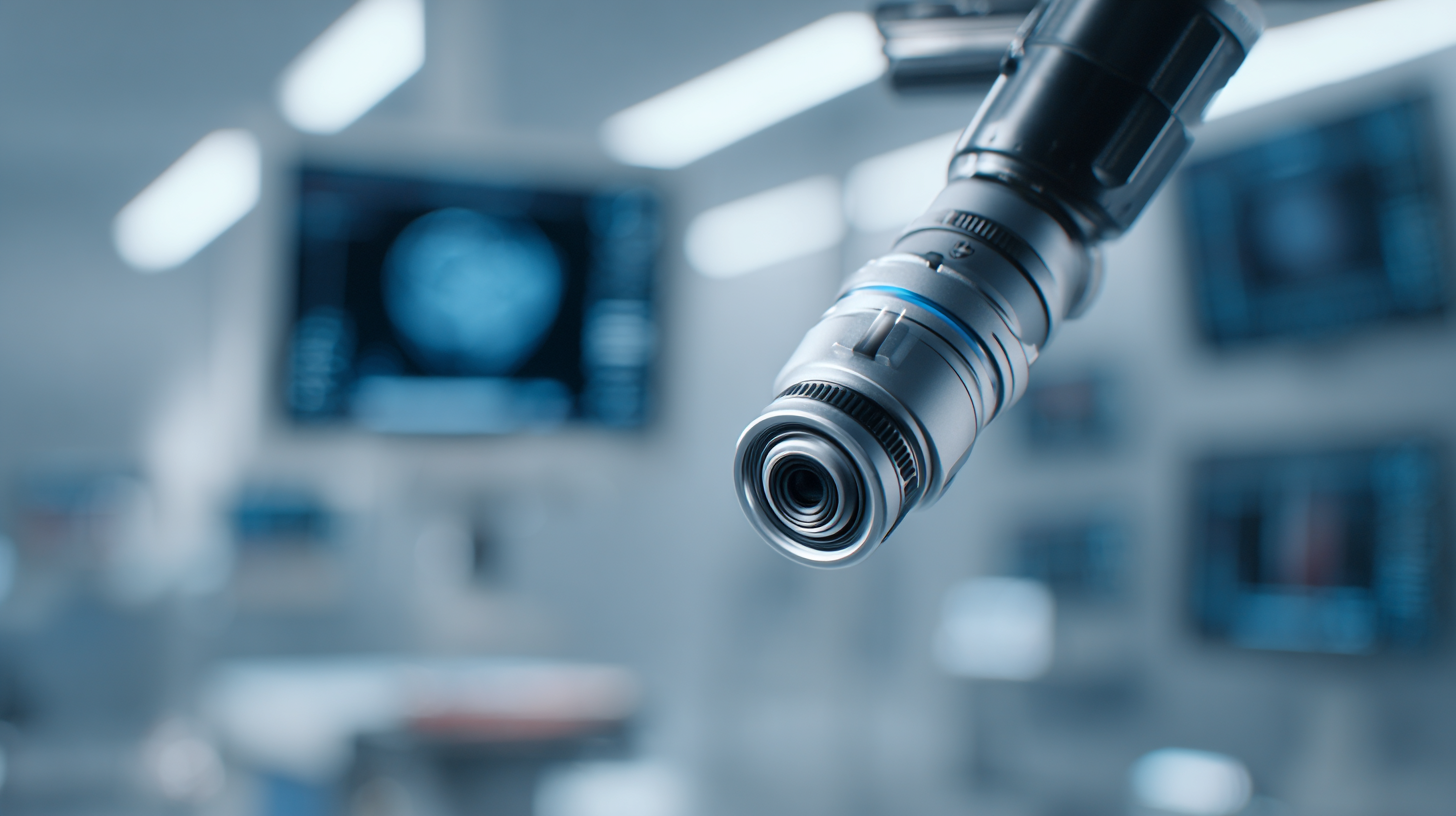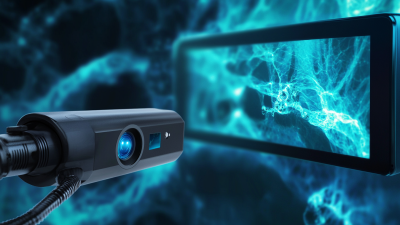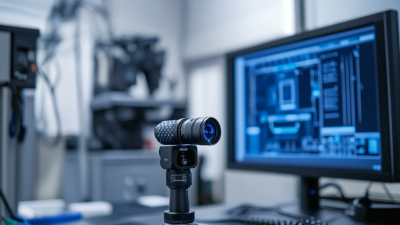Unlocking the Future of Medical Imaging with Hd Endoscope Camera Innovations and Insights
The field of medical imaging has experienced significant advancements in recent years, particularly with the integration of HD endoscope cameras. These innovations are reshaping diagnostic capabilities and enhancing surgical precision. According to a recent report by Markets and Markets, the global endoscopy market is projected to reach USD 41.3 billion by 2025, driven by the increasing demand for minimally invasive procedures and improved patient outcomes.

HD endoscope cameras offer superior image quality and enhanced visualization that aids surgeons in making more informed decisions during complex procedures. With the ability to capture minute details, these cameras are not only improving the accuracy of diagnoses but also expanding the applications of endoscopy in various medical fields. As technology continues to evolve, the future of medical imaging looks promising, and HD endoscope cameras are at the forefront of this transformation.
The Evolution of Endoscope Cameras in Medical Imaging Technology
The evolution of endoscope cameras has been a pivotal development in medical imaging technology, significantly enhancing diagnostic capabilities across various medical fields. According to a report by Market Research Future, the global endoscopy market is anticipated to reach USD 43.6 billion by 2023, growing at a CAGR of 6.8%. This growth is fueled by advances in camera technology, including high-definition (HD) imaging, which offers improved clarity and allows for better visualization of internal structures. Enhanced image resolution has made it possible for healthcare professionals to detect early stages of diseases, such as cancer, with greater precision.
Moreover, innovations in endoscope camera design, such as the introduction of smaller and more flexible cameras, have expanded their applications significantly. These developments enable minimally invasive procedures, reducing patient recovery time and discomfort. As reported by Transparency Market Research, the demand for minimally invasive surgeries is expected to grow, driven by technological advancements. A 2019 study highlighted that using HD endoscope cameras allows for a 50% increase in diagnostic accuracy, underscoring their importance in modern medical imaging. The ongoing research and technological improvements in endoscope cameras represent a promising future for the enhancement of patient care and clinical outcomes.
Evolution of Endoscope Camera Technology
Key Innovations Driving the Future of HD Endoscope Cameras
The landscape of medical imaging is evolving fast, with innovations in HD endoscope cameras at the forefront of this transformation. The recent European launch of the latest endoscopic technology underlines a significant milestone in the industry. Enhanced image clarity and precision are now within reach, promising improved diagnostic capabilities and patient outcomes. As healthcare professionals seek better tools for visualization, these high-definition systems are equipped to meet the increasing demands of modern medical procedures.
Among the notable advancements is the introduction of single-use endoscopy interfaces, which streamline the process while maintaining high-quality imaging standards. The compact design of new camera chips, such as those measuring just 2.5x2.5mm, allows for innovative disposable HD endoscopic solutions. Additionally, emerging technologies like robotic wireless capsule endoscopy are paving the way for less invasive and more efficient diagnostic methods. The ongoing focus on intelligent designs will likely lead to more sophisticated procedures, ultimately enhancing the clinician's ability to diagnose and treat patients effectively.

Benefits of High-Definition Imaging in Minimally Invasive Procedures
High-definition (HD) imaging has revolutionized the landscape of minimally invasive procedures, providing significant advantages for both surgeons and patients. With clearer, more detailed images, healthcare professionals can better visualize anatomical structures, enhancing their ability to perform precise interventions. This clarity is crucial during complex surgeries where even minor miscalculations can lead to complications. The integration of HD endoscope cameras into surgical practices allows for a more accurate assessment of the surgical field, minimizing the risks associated with traditional imaging techniques.
Moreover, the benefits of HD imaging extend beyond the immediate surgical environment. Enhanced visual quality facilitates improved training for medical professionals, as they can better understand procedural nuances through real-time, high-resolution visuals. Additionally, patients experience shorter recovery times and minimal scarring due to the precision of minimally invasive techniques. As these innovations continue to unlock new possibilities in medical imaging, they pave the way for safer, more effective surgical practices while enhancing the overall patient experience.
Challenges and Solutions in Implementing Advanced Endoscope Technologies
The implementation of advanced endoscope technologies, particularly with HD endoscope cameras, presents several challenges that must be addressed to enhance their effectiveness in medical imaging. One significant challenge is the integration of these sophisticated devices into existing medical systems. Clinicians and technicians may require additional training to effectively utilize the advanced features of these cameras, which can inhibit adoption rates. Technical compatibility with current imaging platforms is another concern, as seamless data sharing is crucial for accurate diagnostics and treatment planning.
Moreover, there are financial constraints associated with acquiring and maintaining cutting-edge endoscopic equipment. Many healthcare facilities, particularly in underserved regions, face budget limitations that restrict access to the latest innovations. To overcome these barriers, organizations can consider collaborative funding models or government grants aimed at investing in healthcare technology. Additionally, ongoing dialogue among manufacturers, healthcare providers, and regulatory bodies can foster an environment conducive to innovation while ensuring that new technologies meet the rigorous standards necessary for clinical use. By addressing these challenges, we can pave the way for the successful implementation of HD endoscope cameras that promise to revolutionize medical imaging.
Future Trends in Medical Imaging: What Lies Ahead for Endoscope Use
The future of medical imaging is rapidly evolving, particularly with the advancements in high-definition (HD) endoscope camera technology. As endoscopes become increasingly sophisticated, they offer enhanced imaging capabilities that allow for more accurate diagnoses and minimally invasive procedures. The integration of AI and machine learning into these systems promises to improve real-time analysis, enabling healthcare professionals to make better-informed decisions during surgeries and examinations.
In addition to technical improvements, future trends in endoscope use will likely prioritize patient-centered designs and ease of use. Development efforts will focus on making endoscope systems more affordable and accessible, thus expanding their application in various medical fields. The potential for wireless and flexible endoscopic cameras will further broaden their utilization, allowing for better access to hard-to-reach areas. As regulatory bodies adapt to these innovations, the medical community can expect a new era of imaging that not only enhances surgical precision but also improves patient outcomes and satisfaction.

Related Posts
-

7 Compelling Benefits to Choose Hd Endoscope Camera for Your Business Needs
-

Exploring Real World Applications of Video Endoscopes and How They Transform Inspections
-

What Makes Bluetooth Otoscope a Game Changer for Home Health Care
-

How to Identify Quality Manufacturers for the Best Otoscope Tips You Need
-

Ultimate Guide to Choosing the Best Otoscope for Dogs Based on Veterinary Insights and Data
-

What is a Video Endoscope and How Does it Revolutionize Medical Diagnostics

